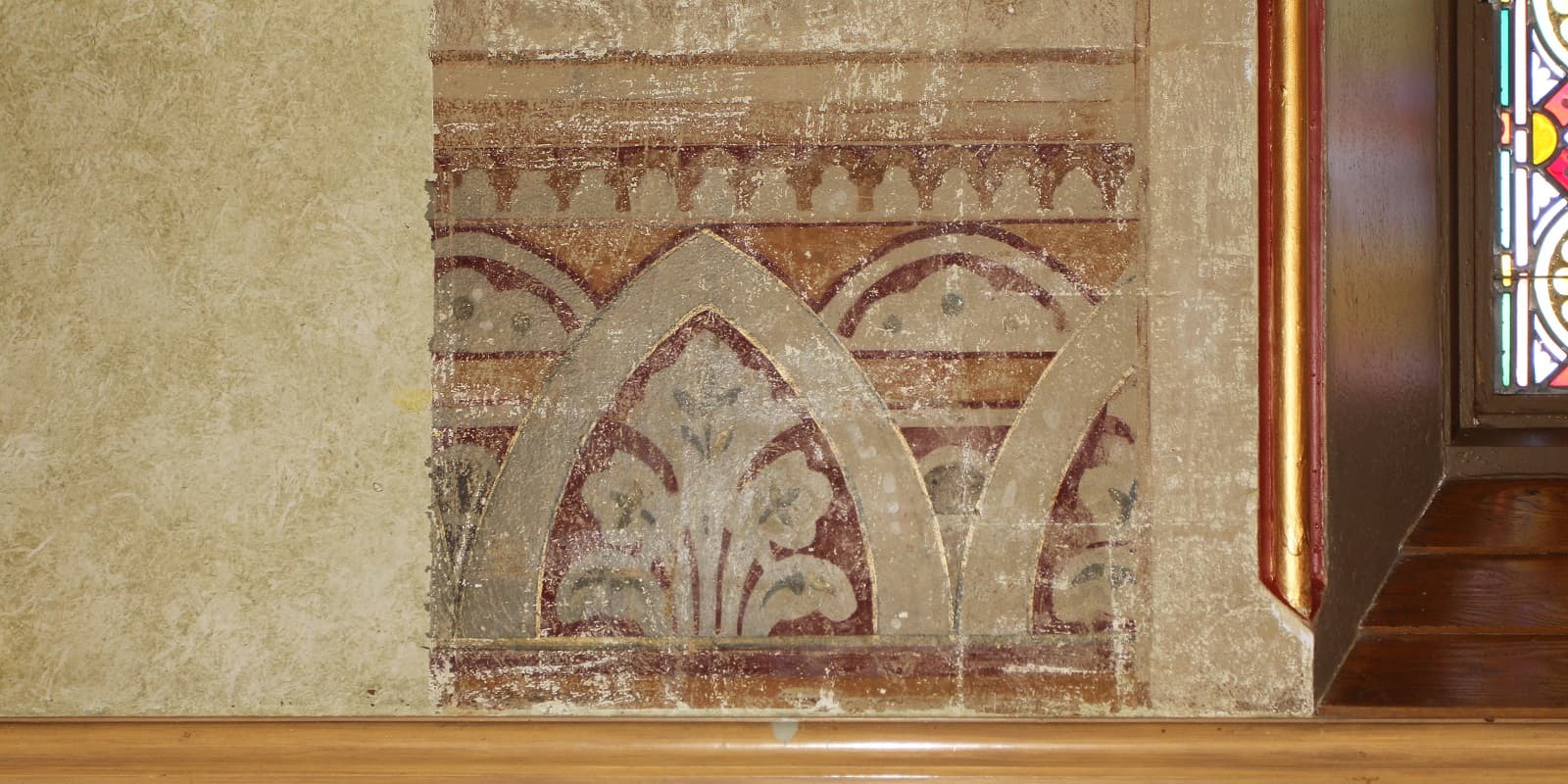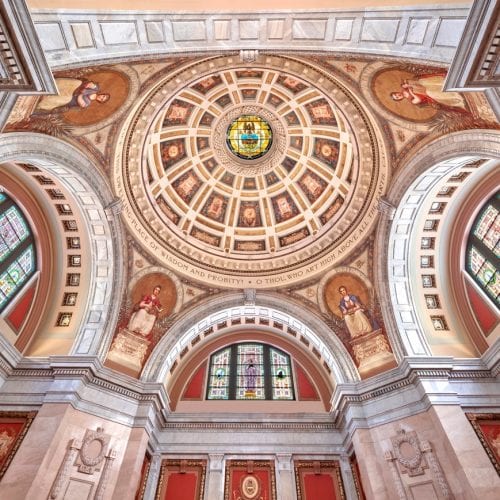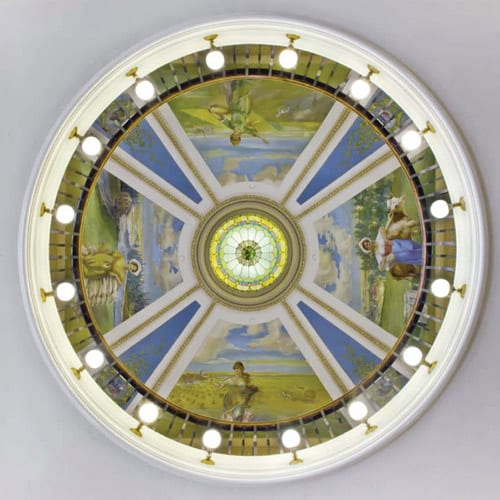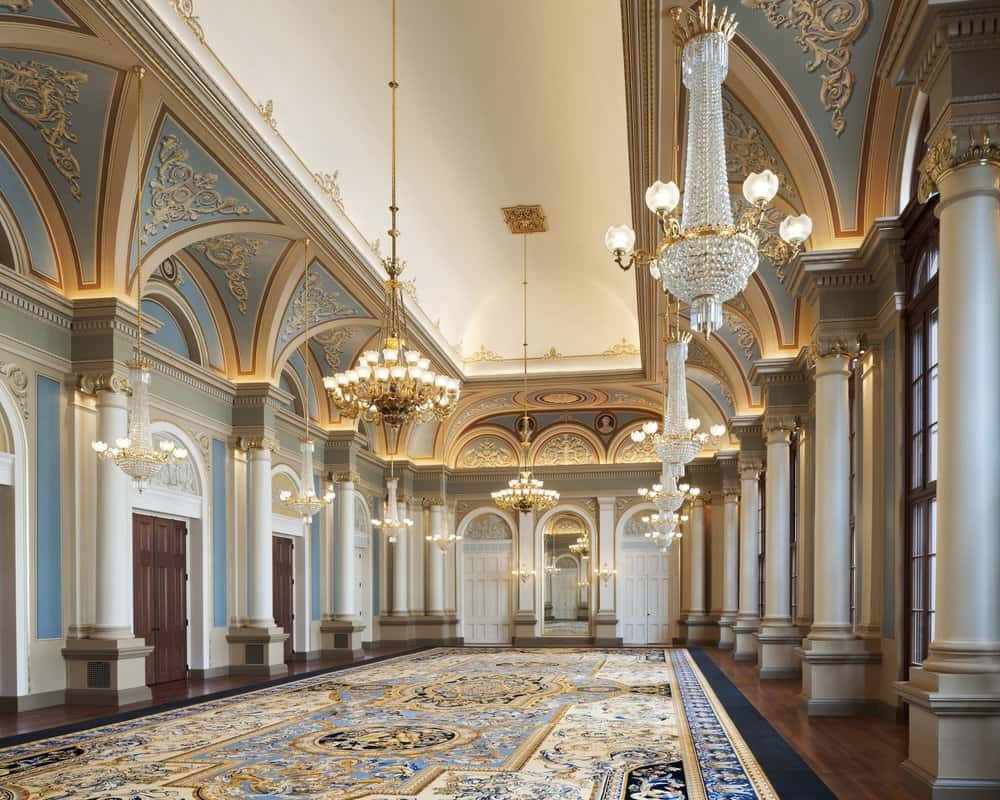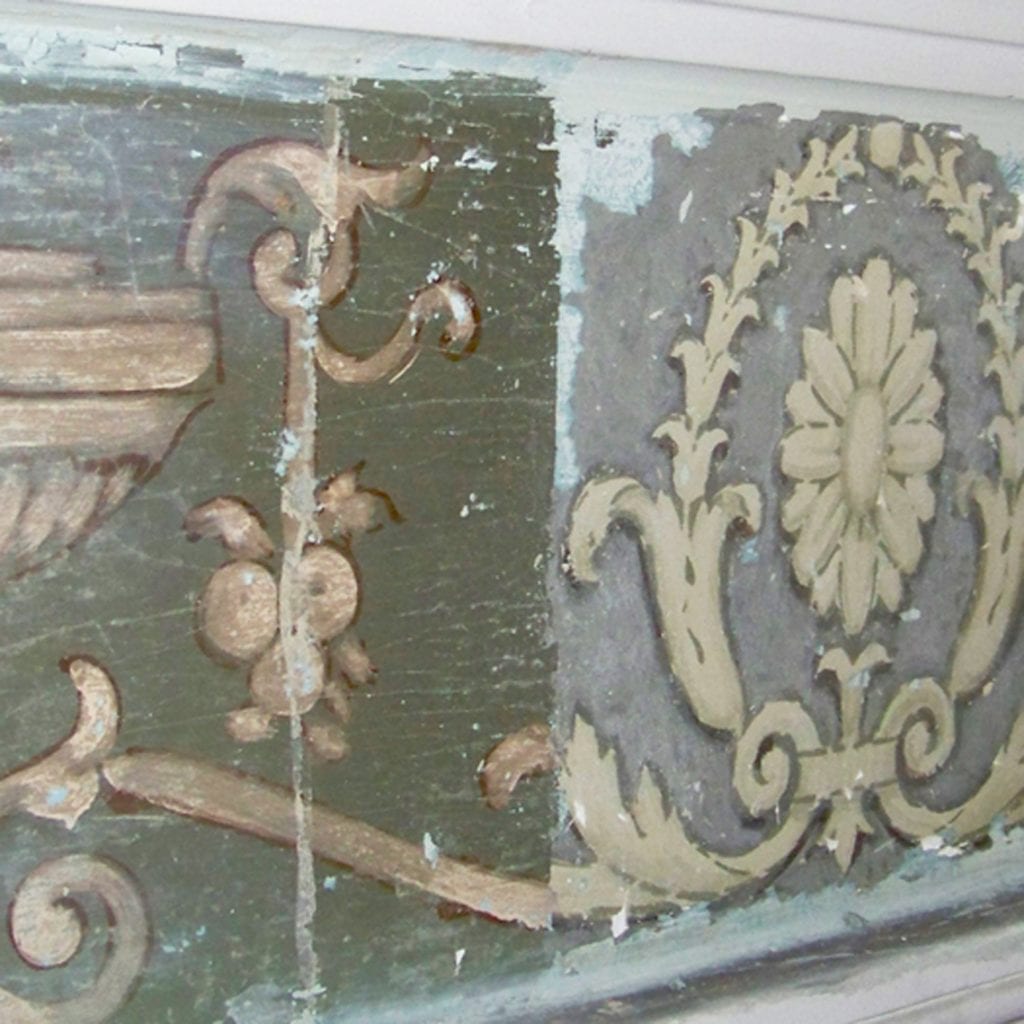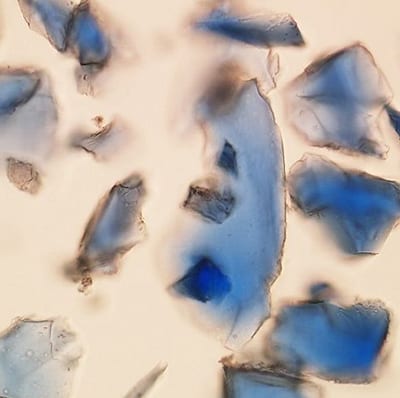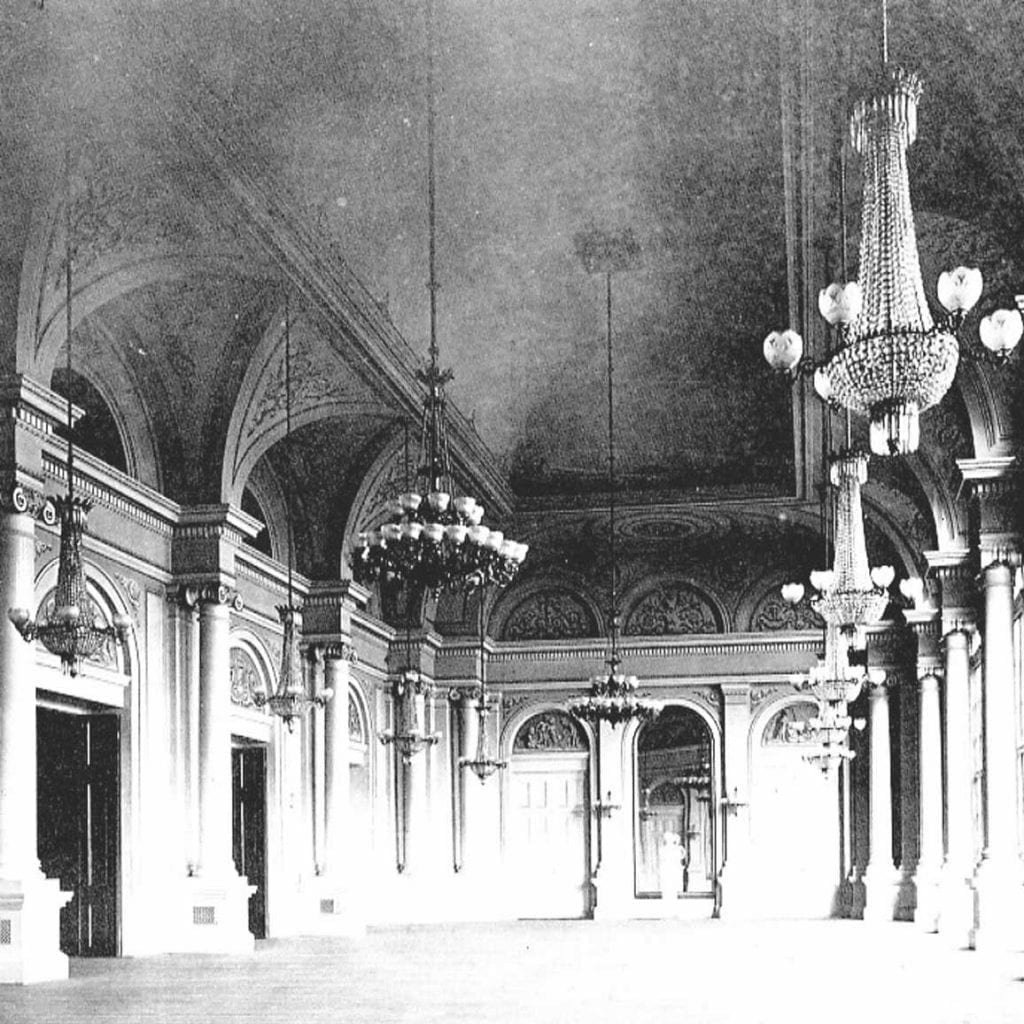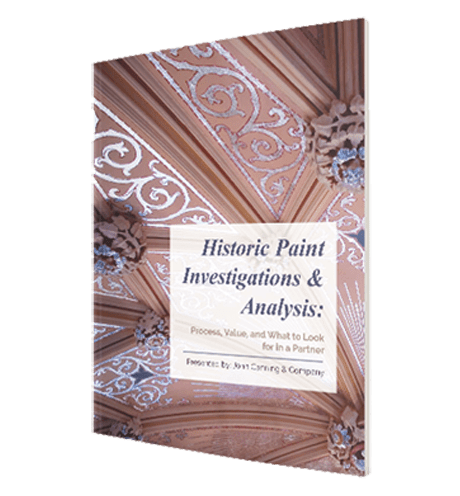A historic paint investigation is a key component of any historic restoration or renovation project. In addition to providing further information into the historic finishes of a space or building, paint analysis and investigations can provide an understanding of why finishes may be failing, as well as insight into past construction modifications or repairs.
As with any planning or pre-construction phase of a project, specifications can assist in selecting and contracting the right architectural conservator for a project. When preparing a Request for Proposal (RFP), specifications can assist in identifying qualified consultants that have experience in sampling techniques, traditional finishes and methods of execution, color matching, documentation, and interpretation.
Because developing a specification for an RFP is such a critical piece of the puzzle, we’ve pulled together this guide of key factors that should be considered and incorporated when writing a specification. These include the conservator’s qualifications as well as a thorough understanding of their process and deliverables as defined by example project reports, which should include information about sampling, on-site investigation, laboratory analysis, color matching, and the final findings report.
1. Fully define the project’s scope.
What is the goal of this project? Is it to understand the type of historic paint used, to uncover existing decoration that may have existed, or something else entirely?
A defined scope will help you understand the requirements needed for the historic paint investigation, what kind of qualifications and experience that conservator will need to have, and will inform the extent of sample analysis and on-site investigations that may be required.
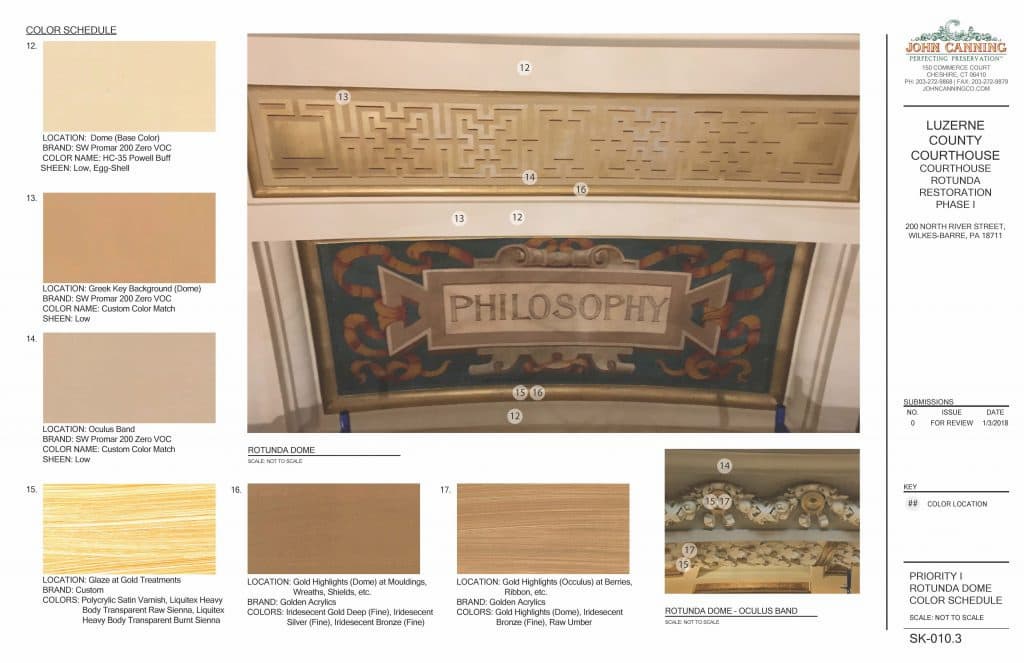
The number of samples taken for microscopy analysis is dependent on the architectural features of a space or building. Samples should be taken from a variety of locations, surfaces, and substrate in order to produce a complete understanding of the feature.
The location where samples are extracted should be documented and labeled with room designations, etc. as required. Sample locations should be incorporated into the final Findings Report with photos or floor plans and/or elevations with locations annotated.
Historic information such as photographs, articles, or past structures reports can assist in identifying areas for sample extraction.
Sampling should be supported with on-site explorations such as exposures. Exposures will help determine areas of decoration or faux finishes and will provide further insight into the the relationship of color and finishes.
2. Identify the qualifications your conservator must meet.
An architectural materials conservator should have experience in a building of similar style, year, and era as your project. When creating the specification, you can and should request project examples and references (see below) to be submitted along with the proposal.
It is essential that their work should adhere to the the AIC Code of Ethics and Guidelines for Practice.
3. Request project examples to gauge their work.
In addition to detailing the scope and results of the project, project examples should detail sampling techniques and relevant experience in identifying paint stratigraphy and color matching.
Below, we explore the kind of information that a qualified conservator should include in their example report, so that you can better evaluate the proposals that you receive.
Sample Laboratory Analysis
The conservator should be experienced in various microscopy and stratigraphy techniques, and samples should be prepared in a manner that will provide a clear cross-section with the significant period identified for color matching.
Samples should be photographed at high magnification and incorporated into the findings report. Where necessary, ultraviolet light should be incorporated.
When reviewing project examples, be sure to scrutinize the photos and cross-sections provided by each potential partner, as well as other scientific documentation, as these speak to the quality of work that you can expect if you were to hire them for your project.
Sample Color Matching
An important component of the interpretation of the findings report, color matching should be provided for each sample for the specified significant, or target period.
Colors should be matched to the Munsell color system, one of the most widely used systems in the preservation field.
The closest commercial color match, i.e. Sherwin Williams or Benjamin Moore, should also be included. A commercial color card or drawings may be incorporated into the findings report.
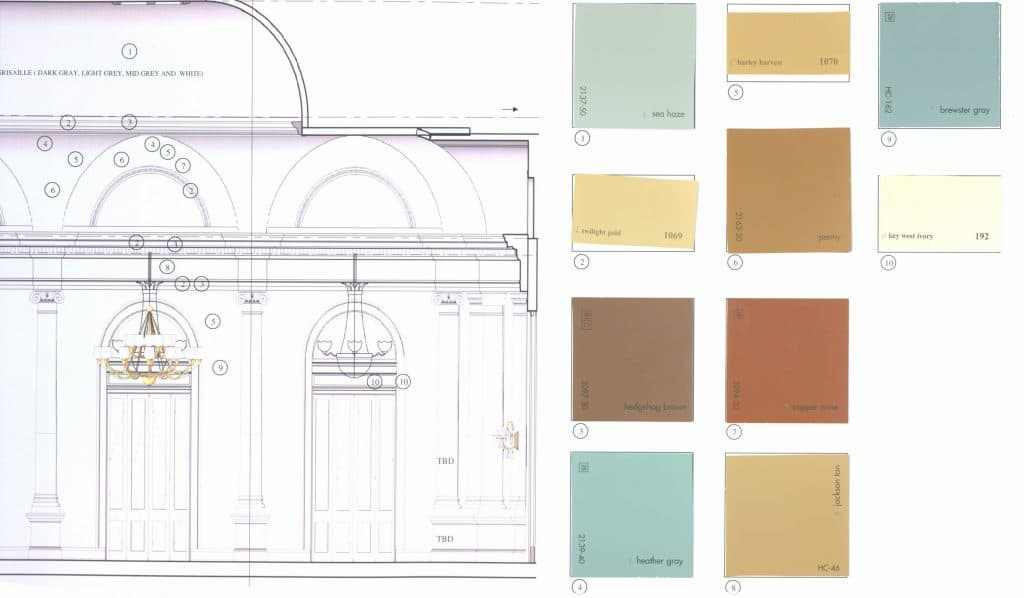
Sample Findings Report
The final report should incorporate the methodologies, interpretation, and recommendations.
Methodologies should provide an understanding of what techniques were used for sample extraction and microscopy analysis, as well as what techniques were used during the on site investigations and exposures. The areas of investigation should be identified with annotated drawings and photos, where possible.
Interpretation should identify the target campaign, areas of modifications or renovations, if any, and color matching.
Where possible, the findings report should incorporate recommendations for conservation or replication.
4. Ask for qualified references.
References from similar projects should also be included by the conservator. References may be directly from an Owner, an Architect, or other preservation professionals that they have collaborated with. References should be able to provide proper testimonial of the conservators qualifications.
Choosing the Right Partner for Your Project
Whether you choose to return to the historic paint scheme or develop a new scheme that respects the historic color palette, selecting the right conservator for your project is essential. Incorporating the right information into your RFP will help ensure that the conservator you ultimately choose to work with is the best fit for your project.
The ideal conservator should be willing to work with the Architect, Owner, and any other people involved with the project to provide a deeper understanding—and appreciation—of the original finishes.

